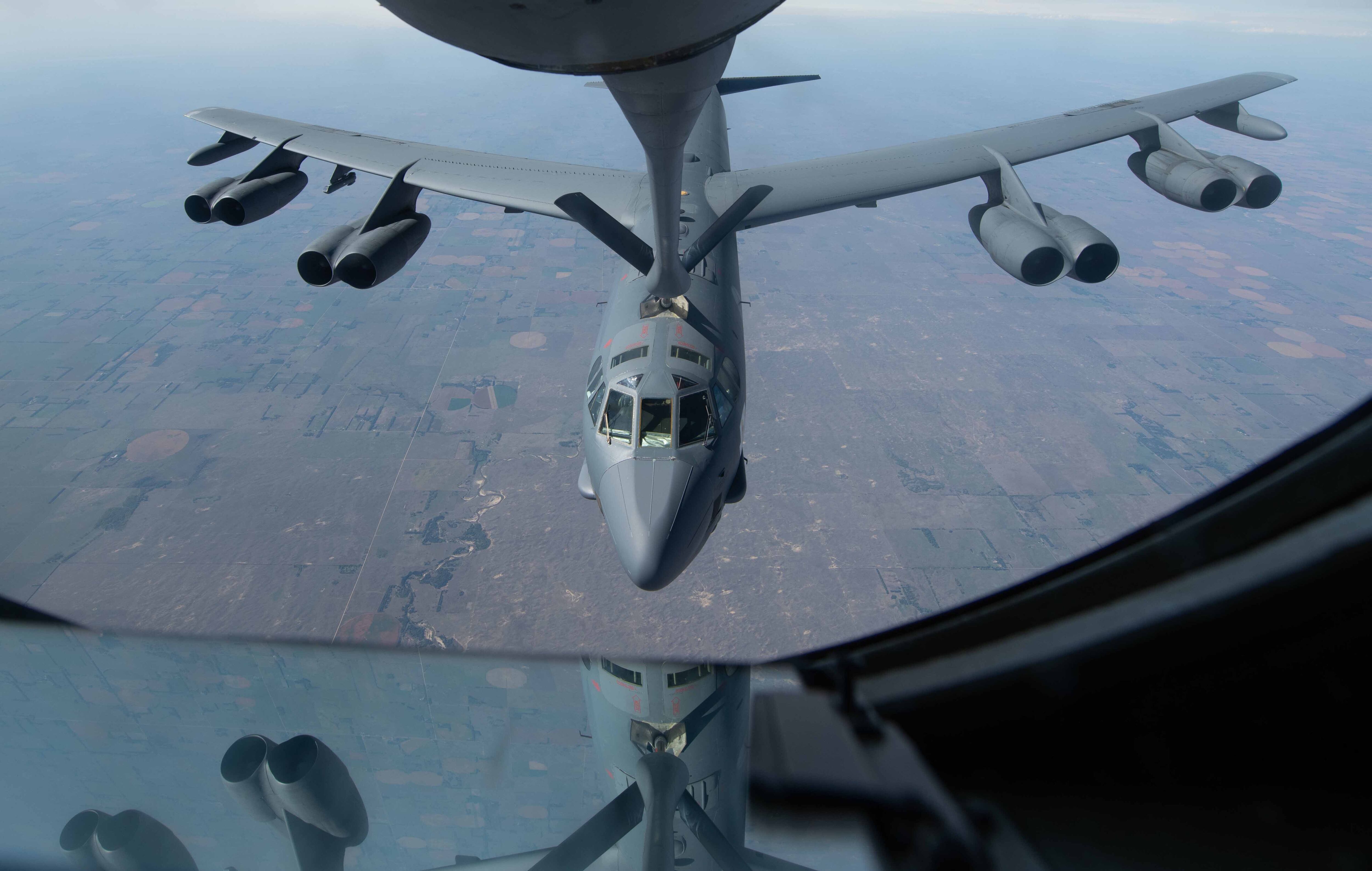WASHINGTON — The U.S. Air Force expects to seek a Milestone B decision on the program to put new engines on B-52H Stratofortress bombers in September.
The completion of the Milestone B review will allow the Commercial Engine Replacement Program to begin engineering and manufacturing development as well as transition away from the middle tier of acquisition rapid prototyping effort under which it now operates, service acquisition chief Andrew Hunter told lawmakers Tuesday.
“I have a fairly high degree of confidence we’ll be ready in the fall” for the program to enter the engineering and manufacturing development phase, Hunter said at a hearing before the House Armed Services Committee’s sea power panel.

Rolls-Royce and Boeing are working on the effort to replace the B-52H’s current Pratt & Whitney-made, decades-old TF33 engines with new F130 engines. This is meant to keep the Cold War-era bomber — the newest of which entered service in 1962 — flying into the 2050s as the B-52J.
Hunter said the B-52′s new commercial-derivative engines will be able to use a broader supply chain than the current TF33 engines, which frequently break and have problems with parts availability.
The Commercial Engine Replacement Program, or CERP, will also update the B-52′s flight systems, cockpit throttles and displays, Hunter said.
Another planned upgrade to modernize the B-52′s radar will “dramatically improve” the bomber’s situational awareness and ability to accurately strike targets, he added. Communications upgrades are also meant to increase the bombers’ ability to exchange data and collaborate with other Air Force aircraft or units to strike targets.
“It’s all three programs working together,” Hunter said. “When you look at it, this is an almost complete overhaul of the mission systems of the B-52, and that is what will enable it to operate well into the future.”
Part of CERP’s current rapid prototyping effort involved creating a digital twin of the new engine to test it and catch problems before engines are physically built. Hunter said this digital prototyping work has “done quite a bit of risk reduction on the program.”
Rolls-Royce is also testing the new F130 engines at an outdoor test facility at NASA’s Stennis Space Center in Mississippi, the company said in March.
Hunter told lawmakers that as part of that testing work, Rolls-Royce put a pair of F130 engines in a pod that simulates the pylons from which they will hang on the B-52, and conducted test runs of the engines. Those tests yielded information on how well the engines perform and what kind of vibrations they create when running.
Once CERP completes Milestone B, Hunter said, it will become a formal acquisition program of record.
Lt. Gen. Richard Moore, the Air Force’s deputy chief of staff for plans and programs, said in a potential war against China, the service wouldn’t expect the B-52 to fly in dangerous, contested airspace the way the stealthy B-21 Raider would. Instead, Moore said, the B-52 would use its considerable payload capability to fire standoff munitions out of range of Chinese defenses.
Moore said the Air Force has not decided whether to pursue a future “clean-sheet” bomber to replace the B-52 in the decades to come. The service is first focusing on deciding how many B-21s it will end up buying, and is working on the Next Generation Air Dominance fighter system, as well as next-generation refueling and mobility aircraft, Moore explained.
The Air Force decided to dramatically accelerate acquisition of its next-generation aerial refueling system by about 15 years due to the increasing threat from China, Moore added.
“Certainly the same thing could happen to the bomber portfolio,” Moore said. “If we find out there’s an emerging threat that the B-21 is not capable of handling, we would look to replace or add to the bomber fleet with something that could handle that threat.”
The Air Force isn’t there yet, Moore noted, and the service believes the B-21 will be able to handle the threats on the horizon. If the Air Force decides it needs to bolster its capabilities to handle an emerging threat, Moore explained, it would probably update its weapons rather than its airframes.
“What we see from the Chinese is rapid spiraling of weapons capability, and I think that might be a more likely place where we would attempt to counter the threat, rather than a clean-sheet design,” Moore said. “But I certainly wouldn’t rule that out, and it may be that we don’t have a choice.”
Stephen Losey is the air warfare reporter for Defense News. He previously covered leadership and personnel issues at Air Force Times, and the Pentagon, special operations and air warfare at Military.com. He has traveled to the Middle East to cover U.S. Air Force operations.





